Today, we will see how to extend a partition or disk on your drive in Windows 10. This can be useful if you have extra space on your drive which you would like to use for storing your files and folders. Or if you have deleted a partition, you may want to use the available space without creating an extra partition.
Advertisеment
In older Windows releases, extending a volume required a third-party tool. Modern Windows versions like Windows Vista, Windows 7, Windows 8.1 and Windows 10 allow extending partitions with free space in order to enlarge their size and use the free space for storing your data.
Many users prefer to create multiple partitions on their drive to avoid storing all data on the system partition which has Windows installed. Traditionally, the system drive is your C: drive. If it is large enough, you can shrink it and have partitions D:, E: and so on. See the following article:
How to Shrink a Partition in Windows 10
Windows 10 offers a number of methods that you can use to extend your partitions. These include Disk Management, the console tool "DiskPart", and PowerShell.
To extend a partition in Windows 10, do the following.
- Press the Win + X keys together.
- In the menu, select Disk Management.
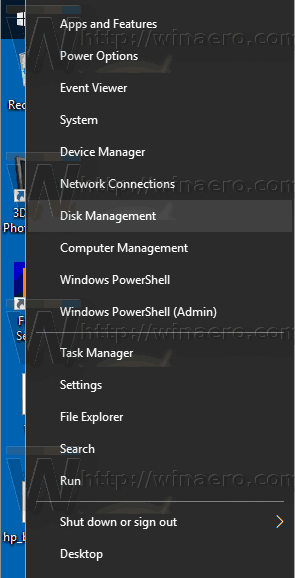
- In Disk Management, right-click on the partition you would like to extend.
- Select Extend volume in the context menu.
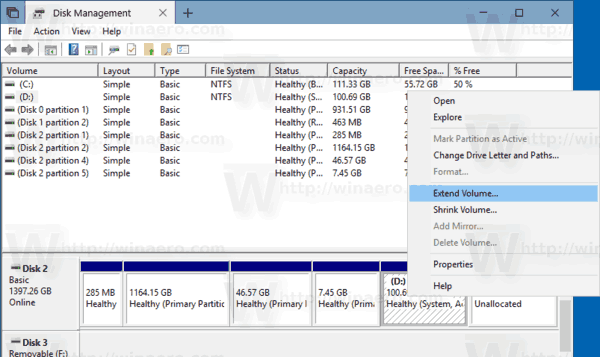
If the 'Extend Volume...' command is not available, this indicates that there is no unallocated space available on the drive to extend the selected partition. - Click on the 'Next' button in the Extend Volume wizard.
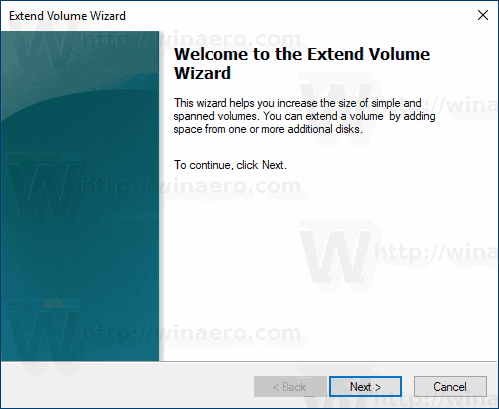
- Type how many MBs you want to add to the partition, and click on Next.
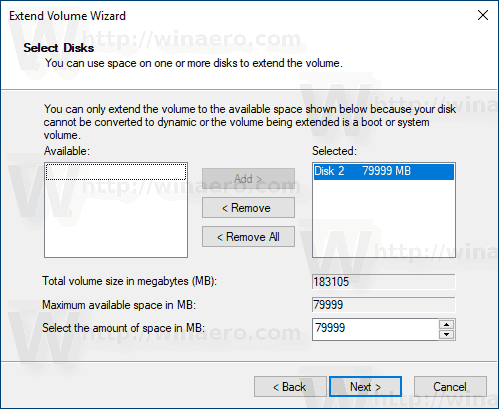
- Click on the Finish button to extend your partition.
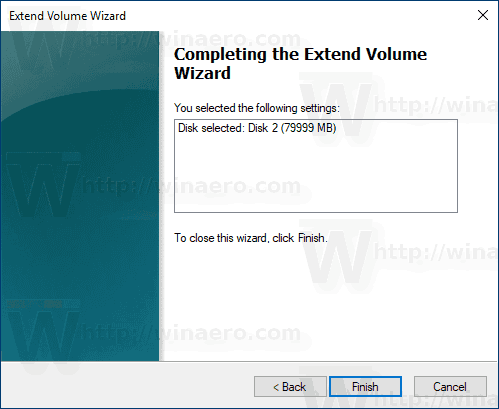
You are done.
The process takes a few seconds but Disk Management shows no progress bar. Once the process is done, it will show you the new size of the partition and any unallocated space, if present.
Note: If for some reason, you are unable to extend your partition or if Disk Management gives you an error, you can try the following. Open System Protection and disable it temporarily for the partition which you wish to extend. Shadow copies, Restore Points and such system data sometimes prevent Windows from changing the partition. The maximum number of reclaimable bytes might be higher once system protection is disabled for the partition. You can re-enable System Protection once you have extended the partition.
Extend a partition using DiskPart
DiskPart is a text-mode command interpreter bundled with Windows 10. This tool enables you to manage objects (disks, partitions, or volumes) by using scripts or by direct input at the command prompt.
Tip: DiskPart can be used to wipe a disk or a partition securely.
To extend a partition using DiskPart, do the following.
- Open an elevated command prompt.
- Type
diskpart. - Type
list volumeto see all drives and their partitions.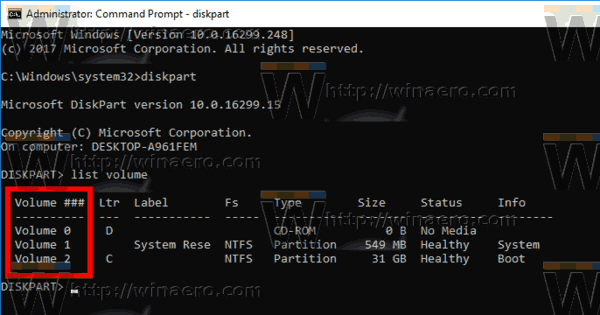
- Look at the ### column in the output. You need to use its value with the command
select volume NUMBER. Substitute the NUMBER portion with the actual partition number you want to extend.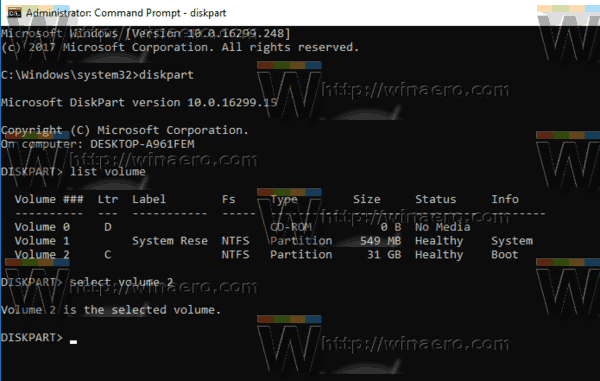
- To utilize all of the unallocated space, type the command
extendwithout arguments. - To extend into a specified size of unallocated space, type
extend size=<size in MB>. Substitute 'size_in_MB' with a value that is not greater than the maximum number of unused bytes.
You should see the message DiskPart successfully extended the volume.
Finally, you can use PowerShell for doing the same operation.
Extend a partition using PowerShell
- Open an elevated PowerShell instance.
- Type
Get-Partitionto see the list of your partitions.
- Note the drive letter and type the next command:
Get-PartitionSupportedSize -DriveLetter drive_letter
Replace the "drive_letter" portion with the actual value to see the minimum and maximum size for this partition (SizeMin and SizeMax).
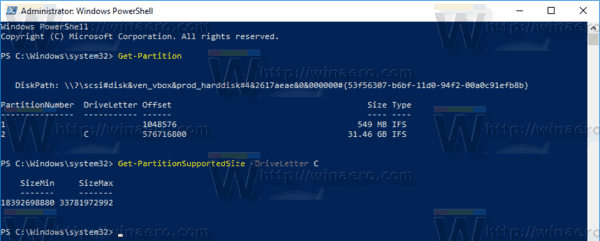
- The next command will shrink or extend your partitions:
Resize-Partition -DriveLetter "drive_letter" -Size size_value
Supply the correct drive letter and its new size in bytes. The value should be between SizeMin and SizeMax values you've got from the previous step. This way, you can shrink or expand the partition.
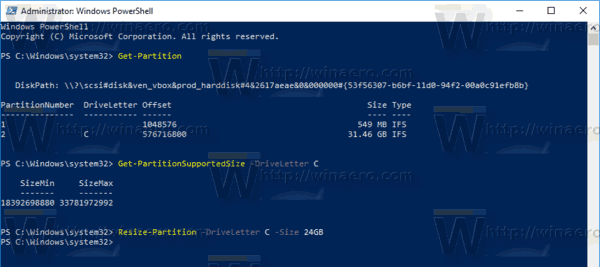
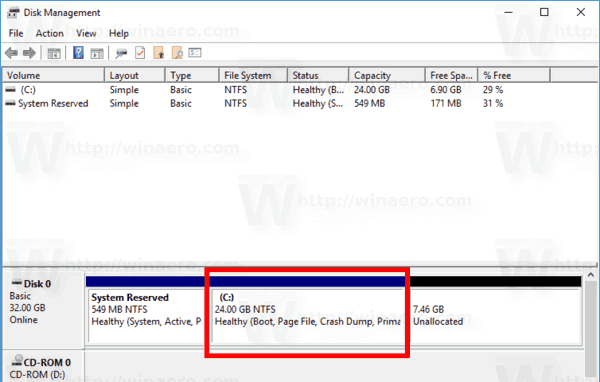
Tip: The -Size argument accepts size modifiers like:
-Size 1KB - for one kilobyte.
-Size 1MB - for one megabyte.
-Size 1GB - for one gigabyte.
That's it!
Support us
Winaero greatly relies on your support. You can help the site keep bringing you interesting and useful content and software by using these options:

Very informative Sergey! Thanks a lot. I always used third party tools not knowing this.
Can you recommend a third party tool to merge two allocated partitions without losing data.
Acronis Disk Director